Full Name Mary Joan DeFeo Period Modern art Role Visual artist | Name Jay DeFeo Nationality American Known for Painting | |
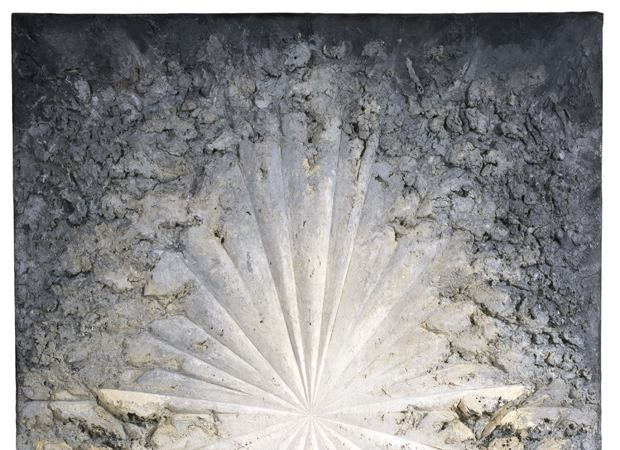 | ||
Artwork The Veronica, Incision, Easter Lily, Untitled (For B. C.) | ||
Jay defeo before and after the rose
Mary Joan Jay DeFeo (March 31, 1929 – November 11, 1989) was a visual artist associated with the Beat generation who worked c.1950-1989 in the San Francisco Bay Area.
Contents
- Jay defeo before and after the rose
- Jay defeo a retrospective at the whitney
- Life and work
- Collections
- Legacy
- References

Jay defeo a retrospective at the whitney
Life and work
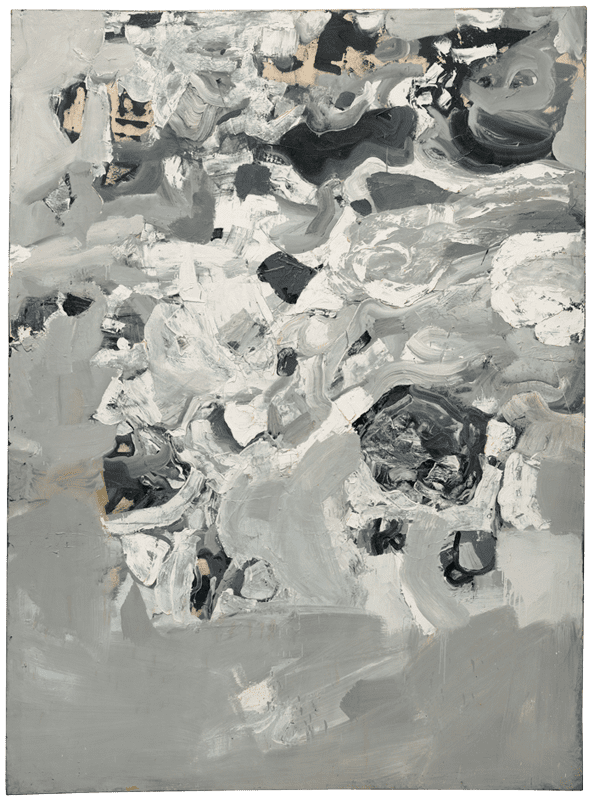
An only child, Mary Joan DeFeo was born to a nurse from an Austrian immigrant family and an Italian-American medical student in Hanover, New Hampshire in 1929.
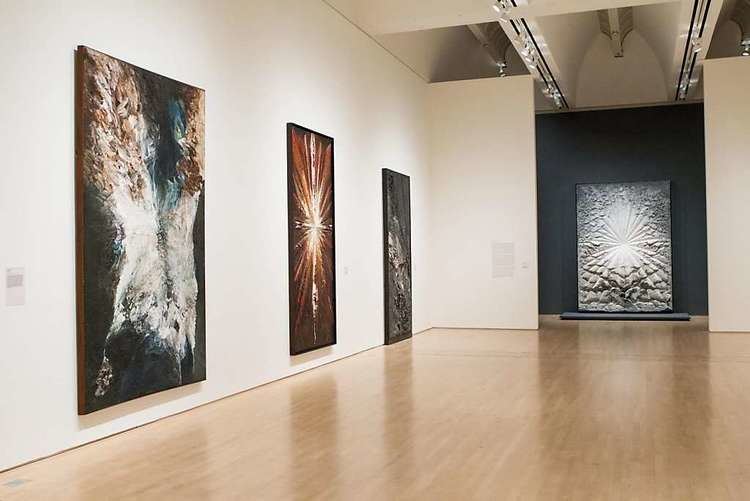
In 1932, the family moved to the San Francisco Bay Area, and her father enrolled in Stanford University School of Medicine. Her parents’ marriage was troubled, and DeFeo was frequently separated from them throughout her early childhood. DeFeo spent a year in institutional care when she was four and was periodically sent to live with her maternal grandparents in rural Colorado. DeFeo moved with her mother to San Jose, California after her parents divorced in 1939.
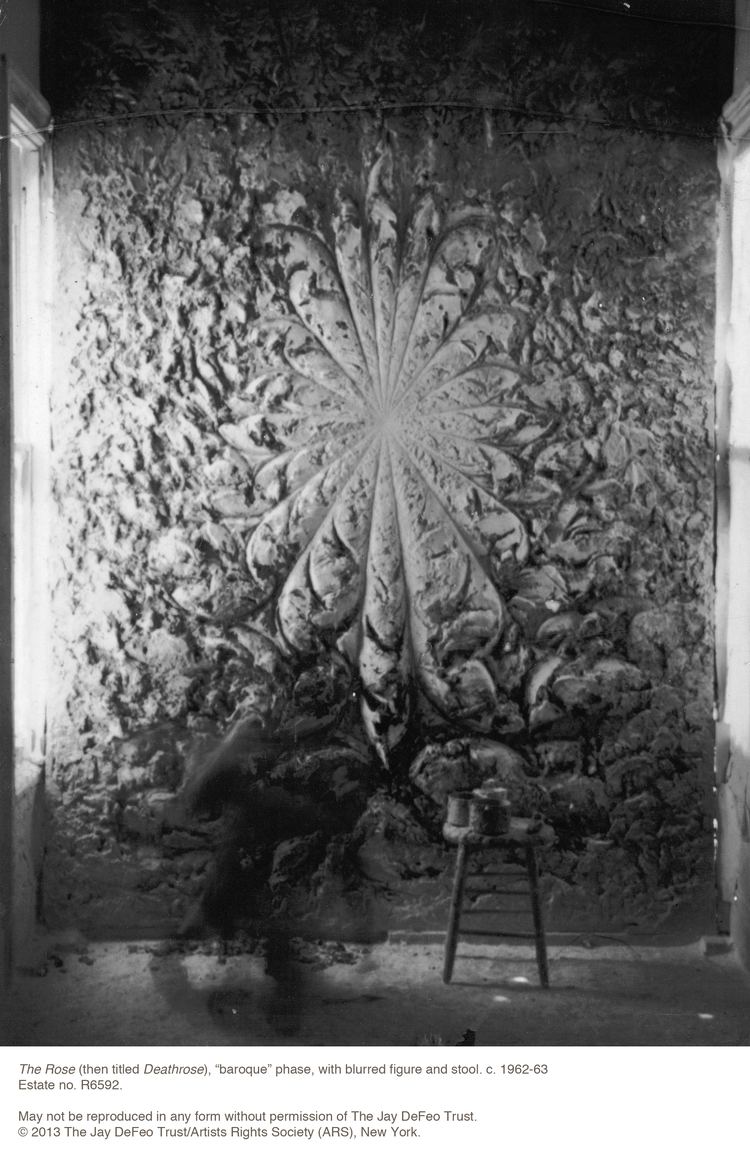
DeFeo became known as "Jay" in high school, where she found a mentor in her art teacher. She was also mentored by her neighbor, a commercial artist named Michelangelo. In 1946, she enrolled at the University of California, Berkeley. There, she explored the art scene in San Francisco and embraced abstract expressionism. Thanks to Margaret Peterson O'Hagan, DeFeo was exposed to North American native art in her Berkeley studies. She earned her BA in 1950 and her MA in 1951. She resisted what she called "the hierarchy of material," using plaster and mixing media to experiment with effects, a thread one can see running through the art of that time, especially on the West Coast.
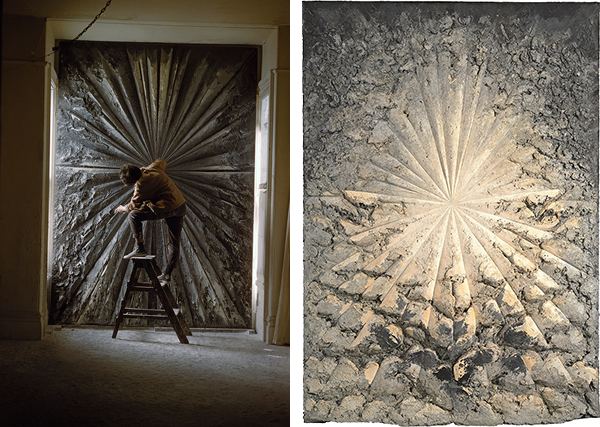
In 1951, a fellowship provided her the opportunity to travel widely in Europe where she worked feverishly. During a three-month period in Florence, she completed over two hundred paintings. She studied African and prehistoric art in Paris and London libraries. After her brief time working in Paris and London, she traveled in Europe and North Africa, and for 6 months worked in Florence, where she started to find her own kind of imagery.
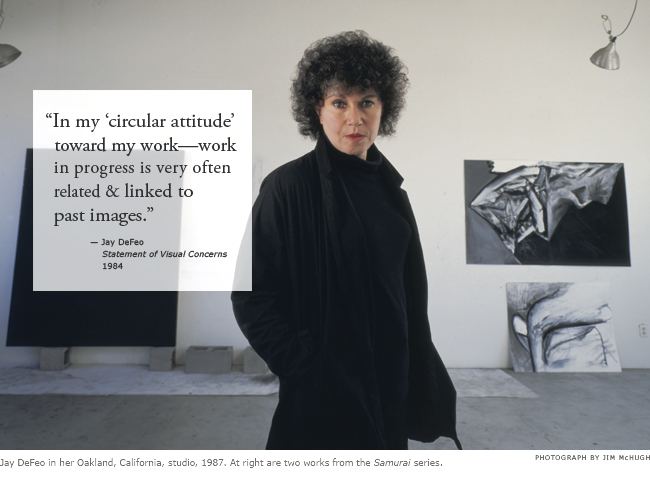
Upon returning to Berkeley, she rented an apartment and took odd jobs. She continued her exploration with image and materials. In 1953, she was fired from her job teaching art to children at the California College of the Arts and Crafts after being convicted for shoplifting two cans of paint. In the mid-1950s, she supported herself by making and selling jewelry. It was during this period, she met Wally Hedrick, a student at the California College of Arts and Crafts and a proponent of what was described as “personalized Dada." They married in 1954 and shared a building on Fillmore Street which was a hang out for other artists, writers and jazz musicians. The artist Billy Al Bengston remembers DeFeo as having “style, moxie, natural beauty and more ‘balls’ than anyone.”

Hedrick, Deborah Remington, Hayward King, David Simpson, John Allen Ryan and Jack Spicer founded the Six Gallery at 3119 Fillmore St in San Francisco, on the location of the King Ubu Gallery, which had been run by Jess and Robert Duncan. Joan Brown, Manuel Neri, and Bruce Conner would become associates of the Six Gallery. DeFeo was present when Allen Ginsberg first read his poem Howl at the famous Six Gallery reading in 1955. In 1959, DeFeo became an original member of Bruce Conner's Rat Bastard Protective Association
In 1959, DeFeo was included in Dorothy Canning Miller's seminal exhibition Sixteen Americans at the Museum of Modern Art, alongside Jasper Johns, Ellsworth Kelly, Robert Rauschenberg, Frank Stella, and Louise Nevelson. Following this she had a solo exhibition at the Ferus Gallery in Los Angeles.
Her most well-known painting The Rose (1958–66) took almost eight years to create and weighs more than one ton. Over ten and a half feet high and nearly a foot thick, the painting is so large that it had to be removed by a forklift from her apartment. With a palette knife, DeFeo carved the white paint ridges of a starburst motif radiating out to rougher textured gray material sparkling with mica. The greater part of DeFeo's work on The Rose terminated when she was evicted from her Fillmore Street apartment in November 1965. The making of The Rose was documented in a short film by Bruce Conner entitled The White Rose (1967). Conner was DeFeo's friend, and he stated that an "uncontrolled event" was necessary to force DeFeo to finish this work. This event was the eviction, which Conner captured in his film, showing DeFeo dangling her feet from a fire escape as she watches the work being removed by forklift. A portion of the wall adjacent to the window had to be knocked out to create an opening large enough for the work to go through. After adding finishing details to The Rose in 1966, DeFeo took a four-year break from creating art. The Rose now resides at the Whitney.
Hedrick and DeFeo divorced in 1969, and she began a thirteen-year relationship with a younger man. DeFeo took a position teaching at the San Francisco Art Institute, and in 1970, she began creating photographs and paintings of her own dental bridge, which a gum disease had necessitated. DeFeo went on to work in several mediums, including intricately detailed drawings.
Throughout her four decades of making art, DeFeo worked extensively making drawings, paintings on paper, photographs, photocopies, collages, photo collages and paintings. In 1980, she became a professor on the faculty of Mills College.
In 1987, DeFeo traveled to Africa, inspiring her to produce a series of abstract drawings called “Reflections of Africa.” She was diagnosed with Lung cancer in 1988 but continued to produce prolifically. She died on November 11, 1989 at the age of 60.
Collections
DeFeo's work is receiving increasing posthumous recognition. Her work is in the collections of the Whitney Museum of American Art, the Museum of Modern Art, the San Francisco Museum of Modern Art, the Art Institute of Chicago, the Norton Simon Museum, the art museum of the University of California, Berkeley, di Rosa, and Mills College Art Museum of Art. The Whitney holds the largest public collection of her work and presented a major retrospective from February 28 through June 2, 2013.
Legacy
The Jay DeFeo Foundation, a private foundation, was established under the terms of the will of the artist. The Foundation is represented by New York-based gallery Mitchell-Innes & Nash, Zurich's Galerie Eva Presenhuber, galerie frank elbaz in Paris, and Hosfelt Gallery in San Francisco.
